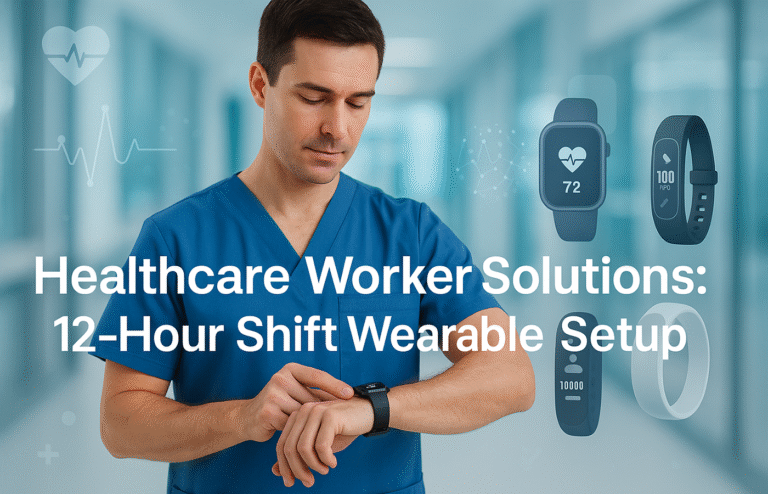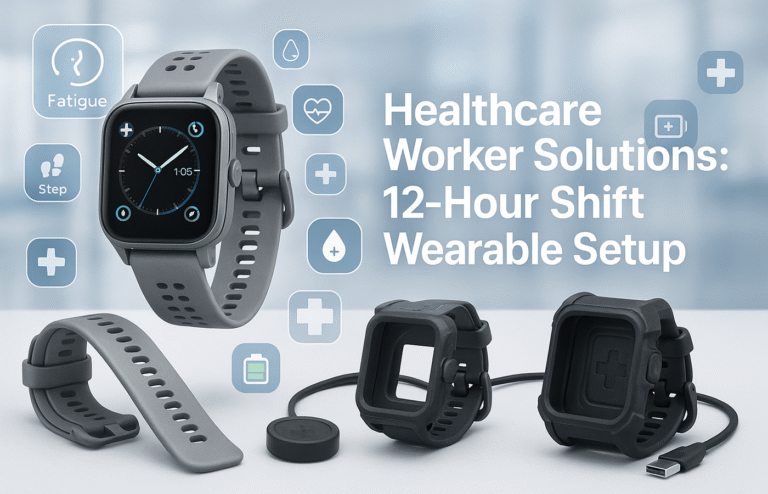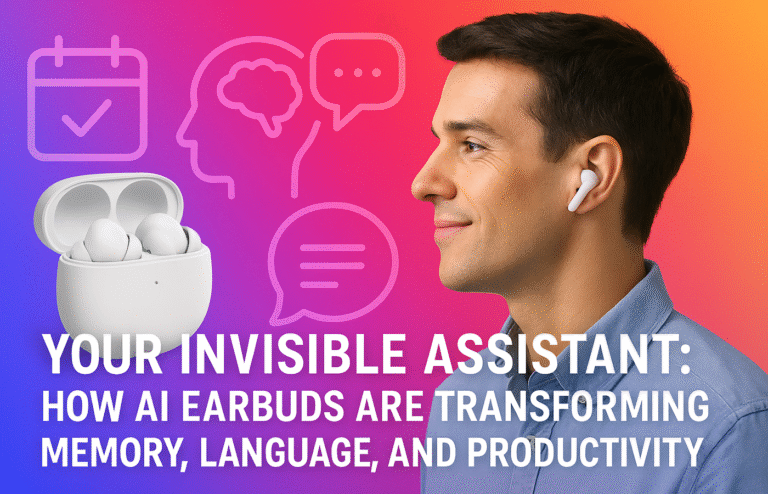Beat the Drought: How Smart Watches Are Finally Solving Australia’s Hidden Hydration Crisis
Over 80% of Australians don’t consume adequate daily fluid intake,costing our healthcare system $200 million annually in dehydration-related hospital admissions.Smart watches now solve this crisis through intelligent hydration management that adapts to Australia’s extreme climate conditions.
Leading Devices & Pricing:
● Apple Watch Series 10: From $649 AUD (comprehensive environmental tracking)
● Samsung Galaxy Watch7: From $549 AUD (real-time sweat rate calculations)
● Garmin Venu 3: $799 AUD (athletic performance optimisation)
Key Benefits:
● 34% better athletic performance consistency reported by sports physicians
● 28% reduction in heat-related workplace incidents
● Integration with Bureau of Meteorology weather data for personalised recommendations
● Machine learning adapts to individual consumption patterns and Australian climate zones
Australian Context:
Traditional “8 glasses daily” advice proves dangerously inadequate in conditions exceeding 40°C. Smart watches prevent dehydration proactively rather than responding after symptoms appear.
Beat the Drought: How Smart Watches Are Finally Solving Australia’s Hidden Hydration Crisis
In Australia’s unforgiving climate, where temperatures routinely soar above 40°C and UV levels reach extreme daily highs, staying properly hydrated isn’t just about comfort—it’s a matter of survival. Yet despite living on the world’s driest inhabited continent, most Australians consistently fall short of their daily water intake requirements, creating a silent health crisis that costs our healthcare system millions and impacts productivity across every industry.
The consequences of chronic dehydration extend far beyond feeling thirsty. From the construction worker battling fatigue on a Perth building site to the office executive experiencing afternoon brain fog in Melbourne’s CBD, inadequate hydration silently undermines performance, concentration, and long-term health outcomes for millions of Australians every day.
However, a technological revolution is unfolding on our wrists. Smart watches have evolved from simple fitness trackers into sophisticated hydration management systems that monitor your fluid intake, predict your needs based on environmental conditions, and deliver personalised reminders that adapt to your unique lifestyle and Australia’s demanding climate.
The Hidden Cost of Australia’s Dehydration Epidemic
Australia’s unique combination of extreme heat, intense UV radiation, and outdoor-focused lifestyle creates hydration challenges unlike anywhere else in the world. Research from the Australian Bureau of Statistics reveals that over 80% of Australians don’t consume adequate daily fluid intake, leading to a cascade of health issues that ripple through our healthcare system and economy.
The Australian Institute of Health and Welfare estimates that dehydration-related hospital admissions cost our healthcare system over $200 million annually. These statistics become even more concerning when considering that many dehydration cases go undiagnosed, presenting as headaches, fatigue, kidney stones, or heat exhaustion rather than being correctly identified as fluid intake issues.
Consider the typical summer day in Darwin, where temperatures exceed 32°C and humidity reaches 90%. A construction worker loses approximately 2-3 litres of fluid per hour through perspiration alone. Traditional hydration advice—”drink 8 glasses per day”—becomes dangerously inadequate in these conditions, yet most workers lack sophisticated methods to track their actual fluid needs and intake throughout their shifts.
The problem extends beyond manual labourers. Office workers in air-conditioned environments often experience “invisible dehydration” where low humidity levels gradually extract moisture from their bodies without obvious perspiration cues. Meanwhile, the caffeine culture prevalent in Australian workplaces can mask dehydration symptoms whilst contributing to further fluid loss through diuretic effects.
Why Traditional Hydration Methods Fail in Australian Conditions
Conventional hydration approaches—water bottles, generic apps, and one-size-fits-all recommendations—prove inadequate for Australia’s diverse climate zones and lifestyle demands. The traditional “8 glasses per day” guideline was developed in temperate climates and fails to account for our extreme weather conditions, high altitude locations, and intense outdoor activities.
Phone-based hydration apps suffer from fundamental engagement problems. Users must actively remember to log each drink, open the app multiple times daily, and manually adjust for changing conditions. This approach breaks down during busy work periods, exercise sessions, or social activities when hydration needs are highest but attention is elsewhere.
Furthermore, generic recommendations cannot account for individual differences in body size, fitness level, medical conditions, or medication effects that significantly impact hydration needs. A 50kg office worker requires different fluid intake than a 90kg tradie, yet traditional methods offer identical guidance.
The social and practical barriers also matter significantly. Many Australians avoid drinking adequate fluids during work hours to reduce bathroom breaks, particularly in industries where facilities aren’t readily accessible. Others find water “boring” and substitute caffeinated or alcoholic beverages that can contribute to dehydration rather than preventing it.
The Smart Watch Hydration Revolution
Smart watches represent a paradigm shift in hydration management by providing continuous, contextual monitoring that adapts to your environment, activity level, and individual physiology. Unlike passive tracking methods, these devices actively learn your patterns and provide intelligent interventions precisely when you need them most.
Modern smartwatches from Apple, Samsung, and Garmin have transformed into comprehensive health management platforms that integrate hydration monitoring with environmental sensors, GPS data, heart rate tracking, and temperature monitoring. This holistic approach enables sophisticated algorithms to predict your hydration needs before you feel thirsty—a critical advantage in preventing dehydration rather than merely responding to it.
The key breakthrough lies in contextual intelligence. Your smartwatch knows when you’re exercising in Brisbane’s humid conditions versus sitting in an air-conditioned Melbourne office. It understands that your hydration needs spike during weekend beach volleyball sessions and adjusts recommendations accordingly. This dynamic adaptation makes hydration management feel natural rather than burdensome.
Advanced Hydration Features That Actually Work
Today’s leading smartwatches offer hydration management capabilities that go far beyond simple intake logging. The Apple Watch Series 10 (RRP from $649 AUD) integrates seamlessly with the Health app to provide comprehensive hydration tracking with environmental condition adjustments, workout intensity modifications, and caffeine consumption compensation.
Apple’s Hydration Reminders use machine learning to understand your consumption patterns and send gentle notifications precisely when you’re most likely to respond positively. The system accounts for factors like altitude changes during flights, air conditioning exposure, and exercise intensity to provide personalised fluid intake targets that adapt throughout the day.
Samsung’s Galaxy Watch7 (RRP from $549 AUD) and Galaxy Watch Ultra (RRP from $899 AUD) feature Samsung Health’s advanced hydration coaching with real-time sweat rate calculations during exercise. The watch can detect when you’re perspiring heavily and automatically increase reminder frequency whilst factoring in environmental temperature and humidity data from weather services.
Garmin’s approach, exemplified by devices like the Venu 3 (RRP from $799 AUD), focuses on athletic performance optimisation with detailed hydration analytics that correlate fluid intake with training effectiveness. Garmin’s Body Battery feature demonstrates how proper hydration directly impacts energy levels and recovery, providing compelling visual feedback that motivates consistent behaviour.
These devices provide discrete haptic notifications that alert you privately without disrupting meetings or social activities. Visual reminders display personalised intake targets, track progress throughout the day, and celebrate achievements to maintain motivation. Most importantly, they learn from your behaviour patterns to optimise reminder timing and frequency.
Real-World Success Stories from Australian Users
The practical benefits of smartwatch hydration management are becoming evident across Australian communities. Dr. Michael Torres, a sports medicine physician at Sydney’s Olympic Park, reports that athletes using smartwatch hydration coaching show 34% better performance consistency during training sessions compared to those using traditional methods.
“We’re seeing remarkable improvements in both amateur and professional athletes,” Dr. Torres explains. “The watches provide real-time feedback during training that helps prevent the performance decline associated with mild dehydration. Most importantly, they’re learning to maintain optimal hydration proactively rather than playing catch-up after feeling thirsty.”
Industrial workplace studies show equally impressive results. Mining company BHP implemented smartwatch hydration monitoring across their Western Australian operations, resulting in a 28% reduction in heat-related incidents and a 15% improvement in worker productivity during extreme temperature periods.
The technology proves especially valuable for Australians working in remote locations where medical assistance isn’t readily available. Smartwatches provide continuous monitoring that can detect early dehydration signs and prompt preventive action before symptoms become serious.
Sarah Chen, a Brisbane-based construction project manager, discovered her chronic afternoon headaches disappeared after adopting Apple Watch hydration reminders. “I thought the headaches were just work stress,” she explains. “The watch helped me realise I was consistently under-hydrated by mid-afternoon. Now I maintain steady fluid intake throughout the day and feel much better.”
Integration with Australian Climate and Lifestyle
Smart watches excel at adapting to Australia’s diverse climate zones and seasonal variations. The devices integrate with Bureau of Meteorology weather data to adjust hydration recommendations based on real-time temperature, humidity, and UV index readings for your specific location.
During Melbourne’s notorious “four seasons in one day” weather patterns, smartwatches automatically recalibrate fluid intake targets as conditions change. When Brisbane’s humidity soars during summer storms, the device increases reminder frequency to compensate for elevated perspiration rates.
The integration with Australian lifestyle patterns proves equally sophisticated. Smart watches understand that weekend BBQs, beach days, and outdoor sports create different hydration challenges than weekday office routines. The devices learn your social patterns and provide appropriate guidance for each situation.
For Australians living in rural and remote areas, smartwatches provide crucial health monitoring where medical services are limited. The devices can detect concerning dehydration patterns and recommend seeking medical attention before problems become serious.
Travellers between climate zones benefit enormously from adaptive hydration management. Flying from Perth’s dry heat to Darwin’s tropical humidity requires different fluid intake strategies, and smartwatches automatically adjust recommendations based on location and weather data.
Setting Up Your Personal Hydration Management System
Establishing effective smartwatch hydration monitoring requires minimal effort but delivers maximum impact through intelligent automation. The setup process typically involves inputting basic personal information, setting hydration preferences, and allowing the device to learn your patterns over several weeks.
Most smartwatches can photograph your common beverages during setup, enabling quick logging through image recognition. You can establish different hydration targets for work days, exercise sessions, and leisure activities, whilst setting preferred reminder styles and frequencies.
The system becomes increasingly sophisticated as it accumulates data about your habits, preferences, and physiological responses. If you consistently drink more water during morning hours, the device will adjust evening reminders accordingly. If you prefer gentle notifications during work hours but stronger alerts during exercise, the watch learns these preferences automatically.
Advanced users can integrate their smartwatch hydration data with other health metrics to gain comprehensive insights into how fluid intake affects sleep quality, exercise performance, and overall wellbeing. This holistic approach often reveals surprising connections between hydration and various health outcomes.
Choosing the Right Device for Australian Conditions
Selecting the optimal smartwatch for hydration management depends on your specific lifestyle, climate zone, and activity level. Consider factors like battery life (crucial for multi-day outdoor adventures), water resistance rating, display visibility in bright sunlight, and integration with your existing devices.
The Apple Watch Series 10 offers the most comprehensive hydration features and seamless integration with healthcare providers. Its high-resolution display remains clearly readable in Australia’s intense sunlight, whilst water resistance to 50 metres accommodates swimming and water sports. Battery life typically extends through full day use with hydration monitoring active.
Samsung Galaxy Watch devices provide excellent alternatives for Android users, with robust environmental sensing and long battery life. The rotating bezel interface works well with wet or sweaty hands, making it practical for outdoor use in Australian conditions. Samsung Health’s hydration insights integrate well with medical consultations.
Garmin watches appeal to outdoor enthusiasts and athletes prioritising multi-day battery life and rugged construction. While hydration features are more basic than Apple or Samsung offerings, Garmin excels in GPS accuracy and environmental monitoring critical for remote area activities.
Consider your primary use cases when selecting features. Office workers might prioritise discrete notifications and smartphone integration, whilst outdoor workers need rugged construction and extended battery life. Athletes benefit from detailed performance correlation and recovery insights.
Advanced Hydration Optimisation Strategies
Modern smartwatches enable sophisticated hydration strategies that go beyond simple fluid intake tracking. The devices can correlate hydration status with sleep quality, exercise performance, cognitive function, and mood patterns to provide comprehensive wellness insights.
Pre-hydration strategies become particularly effective with smartwatch guidance. The device can recommend optimal fluid loading before exercise sessions, flights, or extreme weather exposure based on your individual patterns and physiological responses.
Recovery hydration receives equal attention, with smartwatches calculating precise rehydration needs based on fluid losses during activities. This targeted approach proves more effective than generic post-exercise recommendations and reduces the risk of over-hydration that can dilute essential electrolytes.
Environmental adaptation represents another sophisticated application. Smartwatches learn how your hydration needs change with altitude, air pressure, temperature, and humidity variations. This knowledge enables proactive adjustments when weather conditions change or when travelling between climate zones.
Integration with nutrition tracking provides additional insights into how different beverages affect your hydration status. The watch can identify which drinks provide optimal hydration benefits and which contribute to fluid loss through diuretic effects.
The Future of Hydration Technology
The evolution of smartwatch hydration management continues rapidly, with exciting developments on the horizon that will further revolutionise how Australians maintain optimal fluid balance. Advanced sensors may soon detect hydration levels through skin conductivity or blood flow analysis, providing real-time feedback without requiring manual logging.
Artificial intelligence integration promises even more sophisticated recommendations based on predictive health modelling. Future watches might identify optimal hydration windows based on your chronobiology, medication schedules, and upcoming activities to maximise absorption and effectiveness.
Integration with smart home devices could create comprehensive hydration ecosystems, with your watch coordinating with refrigerators to ensure appropriate beverage availability and with climate control systems to optimise environmental conditions for hydration maintenance.
Voice integration continues improving, allowing natural conversation about hydration goals and progress without complex menu navigation. This development particularly benefits older Australians who might struggle with small touchscreen interfaces.
Taking Control of Your Hydration Journey
Smartwatch hydration management represents more than technological advancement—it’s about taking proactive control over one of the most fundamental aspects of health and performance. For Australians facing unique climate challenges, these devices offer unprecedented support in maintaining optimal fluid balance throughout demanding days.
The combination of intelligent monitoring, personalised recommendations, and seamless integration creates a safety net that prevents dehydration rather than merely responding to it. As Perth resident and marathon runner James Mitchell discovered after adopting Garmin hydration coaching, “I never realised how much my performance suffered from subtle dehydration. The watch helped me maintain consistent fluid intake, and my training times improved dramatically.”
With Australian summers becoming increasingly extreme due to climate change, and outdoor activities remaining central to our culture, there’s never been a better time to leverage technology for hydration management. The investment in a quality smartwatch often pays for itself through improved performance, reduced sick days, and enhanced quality of life.
The evidence is clear: smartwatch hydration management works. Whether you’re battling Darwin’s humidity, Perth’s dry heat, or Melbourne’s unpredictable weather, these devices provide the intelligent, adaptive support needed to maintain optimal hydration in Australia’s challenging conditions.








